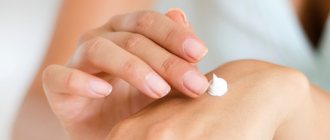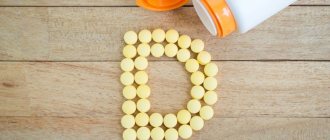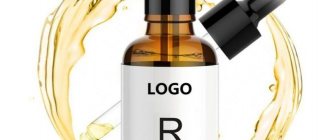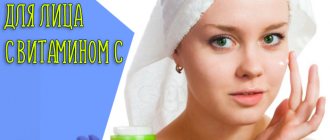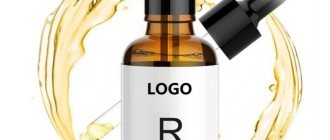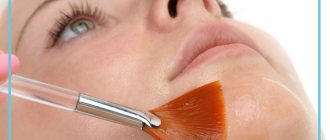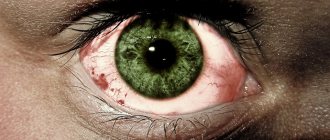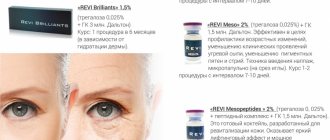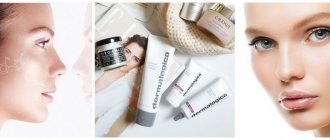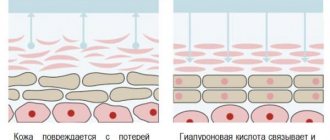The functioning of all human organ systems occurs due to the supply of sufficient nutrients to the body. Science knows many microelements, without which full life activity is impossible. Among them are fat-soluble vitamins, of which retinol is considered one of the most useful. Its main part enters the body with food. When retinol becomes insufficient, there is a need to replenish the deficiency with vitamin A tablets.
What is vitamin A? A brief history of its discovery
Vitamin A obtained from food goes through a series of biochemical processes that lead to the conversion of beta-carotene into a form available for absorption by the body - retinol. This compound acts as the active form of vitamin A and is recommended for use as a dietary supplement when a deficiency is detected. The vitamin was discovered by the German scientist Stepp in 1909 during an experiment on mice. The research involved observations of young rodents. It turned out that the active growth and development of mice stops if the food they receive is exposed to alcohol and ether. This fact is associated with the fact that under the influence of the compounds used, fats and lipoids dissolve.
In 1913, scientists came to the conclusion that mammals cannot fully develop without lipoids. And in 1914, they studied the chemical structure of products containing these substances and discovered an element that was given the name “growth factor” or “fat-soluble factor A.” In 1916, the discovered substance received its modern name - vitamin A.
Retinoic peeling
Chemical peeling based on retinol is called yellow or retinoic peeling Yellow Peel. Peels are widely used in cosmetology. They are indicated for biological aging in patients after 35-40 years of age, for photoaging, for the correction of hyperpigmentation in the face, neck, décolleté and even in the periorbital area, for the correction of stretch marks and follicular hyperkeratosis. The procedure is painless with a minimal recovery period; it can be performed on patients with sensitive skin. Peeling has a prolonged result, its rejuvenating effect is comparable in effect to medium peelings.
Properties of vitamin A. Benefits for the body
Retinol tablets act as an effective remedy in the complex treatment of infectious diseases, such as pneumonia and tuberculosis. Vitamin A also has an anti-inflammatory effect, which is associated with its ability to regulate the immune response of cells (). Retinol is involved in the synthesis of leukocytes, and also activates the production of antibodies when hostile viruses and bacteria enter the body.
It has been proven that vitamin A in tablets and other forms of release can prevent age-related skin changes. Characteristic signs for them are tissue dehydration, decreased collagen production and the appearance of wrinkles. Retinol starts the process of active synthesis of the skin matrix, thereby preventing skin damage and also ensuring its elasticity and firmness ().
The use of retinol in tablets promotes:
- ensuring the health of mucous membranes;
- preventing the development of pathological neoplasms;
- improving bone structure and strengthening it;
- maintaining the full functioning of the reproductive system;
- reducing the concentration of cholesterol in the blood;
- preventing kidney stone formation.
Vitamin A for eyes in tablets is prescribed for its deficiency, since the lack of this substance can provoke a number of pathological changes in the visual organs. They begin with a decrease in the quality of vision in twilight conditions. This phenomenon is called night blindness. It is associated with the fact that retinol is involved in the formation of rhodopsin. This visual pigment is responsible for the adaptation of the visual organs to lighting conditions (). The benefits of retinol for the eyes are also related to the fact that it prevents the appearance of macular degeneration and the development of age-related vision loss.
Trotsenko Tatyana Viktorovna
Dermatovenerologist, cosmetologist, leading specialist, Astrea LLC, Moscow
Retinoids are well known for their ability to act as signaling molecules and influence a number of cellular processes, such as cell growth, division and differentiation, apoptosis, and immunomodulation. Most of their effects are due to conversion to trans-retinoic acid and subsequent binding to specific nuclear retinoic acid receptors (RARs) and/or retinoid X receptors (RXRs). These receptors are classified as transcription factors: their activation affects the expression of a number of retinoid-sensitive genes, including those that control the processes of cell differentiation and proliferation.
Actively dividing cells, which include keratinocytes and sebocytes, quickly “respond” to local application of retinoids by accelerating proliferation and differentiation. As a result of the accelerated division of basal keratinocytes, the cellular composition of the epidermis is renewed more quickly, and this process underlies the rejuvenating effect of retinoids. As for sebocytes, against the background of accelerating their proliferation, a decrease in sebum production is observed - the cells simply do not have time to accumulate it.
The effectiveness of retinoids in correcting signs of chrono- and photoaging has been repeatedly confirmed by clinical studies, and for more than 30 years they have rightfully been the gold standard of anti-aging cosmetics. However, from the first days of retinoid therapy, the photosensitivity of the skin increases, so to achieve optimal results it is necessary to use protective agents. In addition, at the stage of division, skin cells are most sensitive to ultraviolet radiation and other aggressive external factors, such as air pollution or radiation from digital device screens. Protection does not have to be passive (provided by UV filters), although when treating with retinoids it is strongly recommended to use products with an SPF of at least 30. In this regard, plant extracts are very interesting with their complex, often synergistic, effect aimed at increasing the skin’s own protective potential . In particular, photoimmunoprotection is a very attractive option, which involves supporting the skin's antioxidant system, blocking aryl hydrocarbon receptors (AhR) and mobilizing skin immunity. For example, the extract of the Antarctic meadow grass Deschampsia antarctica obtained using a special technology works according to this mechanism.
In this article, we present scientific research data confirming the advisability of using topical retinoids against the background of photoimmunoprotection.
Retinoids and photoimmunoprotectors: an offensive on two fronts
In 2022, the Spanish company Cantabria Labs published the results of an open-label, prospective study of the effectiveness of a new anti-aging care regimen aimed at eliminating signs of photodamage to the facial skin [1]. The study involved 22 Caucasian women aged 45 to 65 years, with Fitzpatrick skin types III and IV, living in a region known for high levels of air pollution. Additionally, an assessment was made of the skin tolerability and safety of the regimen used, since side effects are often the reason for stopping the use of topical retinoids before the end of the course and do not allow achieving the set goal.
The care regimen included the use of two anhydrous semi-occlusive formulations based on patented technologies - RetinSphere Technology® (RST) and EDAFENCE® (EDAT).
RST technology uses retinol and hydroxypinacolone retinoate. To stabilize retinol, improve its tolerability and penetration into the skin, an innovative delivery system has been implemented. Hydroxypinacolone retinoate is a new generation retinoid that can quickly penetrate the skin and directly, without prior hydrolysis, bind to retinoic acid receptors. However, it does not produce the side effects characteristic of tretinoin. This dual system provides both rapid and prolonged action.
EDAT technology was chosen as an addition because the standardized aqueous extract of Antarctic meadowsweet obtained with its help has special cytoprotective and photoimmunoprotective properties due to a specific set of secondary metabolites characteristic of this polyextremophilic plant. Previous studies have shown that EDAT protects skin cells from premature aging caused by exposure to reactive oxygen species and ecotoxicants, including dioxins [2–4]. The latter are involved in excessive activation of the AhR, which leads to oxidative stress and DNA damage. EDAT exhibits antagonism of this receptor in keratinocytes, suggesting a protective effect, and also affects the expression of loricrin, a protein essential for normal skin barrier function.
The concentrated product used in the experiment with 0.5% retinol, 0.5% EDAT and 4% niacinamide was intended to eliminate signs of photoaging. The second cream, called transitional by the authors, contained 0.02% retinol, 0.8% EDAT and 3% niacinamide and was used to gradually adapt the skin to the concentrated drug. Sunscreen with SPF 50+ was used as an auxiliary product. All funds were used for 90 days according to the scheme given in table. 1.
Table 1. Anti-aging care regimen
| Weeks of experiment | Days | Product used at night | Sunscreen |
| 1–2 | 14 | First evening: concentrated product. Next two evenings: transition cream. The cycle repeats until the end of the period | Every morning |
| 3–4 | 30 | Concentrated and transitional product alternately until the end of the period | Every morning |
| 5–12 | 90 | The concentrated product is applied two evenings in a row, followed by a transition cream the next evening. The cycle repeats until the end of the experiment | Every morning |
The effectiveness of the regimen was assessed by the total area and number of wrinkles, as well as skin firmness and elasticity.
An instrumental assessment of the number of wrinkles in the area around the eyes using Visioline showed that on the 30th day the number of wrinkles decreased by almost 30%, but by the end of the experiment the difference was slightly more than 10% - i.e., on the 90th day the number of wrinkles in the periocular region increased slightly compared to day 30 (
Fig. 1 ). The researchers suggested that this may be due to some increase in skin dryness, a side effect often seen with topical retinoid therapy, and recommended adding additional moisturizers to the regimen. However, in general, the results obtained in reducing the number of wrinkles are very encouraging, which is confirmed by the analysis of photographs taken at different stages of the study ( Fig. 2 ).
Elasticity (R0) and elasticity (R6) were assessed using a cutometer. By the end of the 4th week (T2), there was an increase in skin elasticity of 17.5% compared to the initial level, while the average value of viscoelasticity (parameter R6) was barely noticeable. At the end of the experiment (T3), there was a statistically significant improvement in elasticity compared to baseline by 41.7% (p = 0.002), while viscoelasticity increased by 12.8% ( Fig. 3 ).
The observed functional and structural changes correlated well with the subjective assessment of skin condition: all study participants noted that their skin began to look fresher and more youthful, and its texture had noticeably improved.
The products used in the experiment were well tolerated by 86.5% of participants, and only one experienced itching, dryness and flaking. The researchers suggested that this good tolerance was achieved due to the innovative retinol delivery system and the presence of niacinamide, which has anti-inflammatory effects.
In general, the results of the experiment indicate that the proposed scheme can be successfully applied to significantly improve the appearance of aging skin, as well as to prevent accelerated aging. One of the important aspects of rejuvenation using this scheme is blocking damage caused by external factors (air pollution, ultraviolet radiation, etc.). Arctic meadowsweet extract demonstrated high AhR antagonistic activity, which allows it to effectively modulate melanogenesis, barrier function, photoinduced biological responses and skin immunity. Previously, it was found that EDAT technology helps stimulate the production of loricrin, a protein that plays an important role in ensuring the normal functioning of the skin barrier and, accordingly, better protection from exposure to polluted air. The second important aspect, without which it would be impossible to significantly improve the appearance and properties of aging skin, is undoubtedly associated with RST technology.
The improvement in facial skin elasticity and firmness achieved in the described study suggests that the observed effects are partly associated with an increase in collagen content in the papillary dermis due to inhibition of its degradation and stimulation of synthesis, and the observed smoothness of the skin and reduction of wrinkles are the result of epidermal hyperplasia, thickening of the stratum corneum , thickening of the granular layer and increasing the content of glycosaminoglycans in the epidermis and dermis. The applied scheme of topical use of retinoids in combination with a photoimmunoprotector provides objective improvement in a number of facial skin parameters, including a significant increase in elasticity and visible rejuvenation after 90 days of use compared to the parameters recorded at the beginning of the experiment.
Cosmetics recommended for creating skin rejuvenation programs based on the combined use of retinoids and photoimmunoprotectors
Among the developments of the Spanish company Cantabria Labs, on the basis of which anti-aging care regimens can be built within the framework of the concept of joint use of retinoids and photoimmunoprotectors, two lines can be distinguished: Neoretin Rejuvemax and Endocare C Ferulic EDAFENCE®, developed on the basis of the above-mentioned RST and EDAT technologies.
Neoretin Rejuvemax line
In addition to the retinoid complex and Antarctic meadowsweet extract, the line’s products include a number of active ingredients that provide a complex effect:
- Niacinamide (vitamin B3) strengthens the barrier function of the skin, enhances the synthesis of collagen and elastin, improves microcirculation, reduces redness and pigmentation, and also tightens pores, regulates sebum formation, suppresses protein glycation, reduces wrinkles and generally improves skin texture.
- Vitamin C is not only a powerful antioxidant: it stimulates the production of collagen in the dermis, has a photoprotective effect, brightens the skin by inhibiting tyrosinase, and strengthens the skin barrier.
- Vitamin E is another strong antioxidant that works especially well when paired with vitamin C. It accelerates regenerative processes, stimulates the synthesis of collagen and elastin, strengthens the lipid barrier, and eliminates dryness and flaking.
- Trehalose moisturizes the skin well, protects cell membranes, helps restore damaged barrier function, works as an antioxidant and enhances the effect of retinoids.
- Hyaluronic acid effectively moisturizes, helps restore the epidermal barrier, has an anti-inflammatory and soothing effect, and activates regeneration.
- Bisabolol has a pronounced anti-inflammatory and calming effect due to inhibition of the release of pro-inflammatory cytokines. It accelerates the healing process, reduces pigmentation and promotes better penetration of other active substances into the skin.
- Taurine is an amino acid that has the properties of an osmoregulator, photo- and radical protector. Stimulates mitochondrial activity, strengthens cell membranes and inhibits glycation of structural proteins.
The line includes 2 groups of products designed to care for skin adapted or not adapted to retinol, which is of great importance for creating care programs similar to the one described above. Brief information about the line's products and recommendations for their use are presented in table. 2, 3.
Table 2. Brief description of Neoretin Rejuvemax line products
| Means | Active Ingredients | Brief characteristics |
| Neoretin Rejuvemax Day Defense Cream Day protective cream with retinol | Hydroxypinacolone retinoate, retinol in microsponges and glycospheres, niacinamide, vitamin C, Antarctic meadowsweet extract, hyaluronic acid, vitamin E, trehalose, taurine | Light, quickly absorbing cream for rejuvenation and daily skin protection from premature aging |
| Neoretin Rejuvemax Transition Cream Rejuvenating transit cream with retinol | Antarctic meadowsweet extract, niacinamide, hyaluronic acid, vitamin C, retinol in microsponges and glycospheres, hydroxypinacolone retinoate, vitamin E, trehalose, taurine | A very comfortable cream with a restructuring, softening and moisturizing effect ensures maximum skin tolerance during the retinization process |
| Neoretin Rejuvemax Restructuring Gel Anti-aging returquent gel with retinol | Retinol in microsponges and glycospheres, hydroxypinacolone retinoate, niacinamide, hyaluronic acid, Antarctic meadowsweet extract, ascorbic acid, bisabolol, vitamin E | Silky gel for skin not adapted to retinol, includes the RETINSPHERE® retinol complex in optimal concentration for effective skin renewal, improving its texture, smoothing out wrinkles |
| Neoretin Rejuvemax Gel Intense Rejuvenating intensive gel with retinol | Retinol in microsponges and glycospheres, hydroxypinacolone retinoate, niacinamide, hyaluronic acid, Antarctic meadowsweet extract, ascorbic acid, bisabolol, vitamin E | An intensive, silky texture gel for retinol-adapted skin, containing a high concentration of retinoids and delivering intense action for fast, visible anti-aging results. |
Table 3. Schemes for using the Neoretin Rejuvemax system
| Term | In the morning | For the night |
| Skin adapted to retinol | ||
| 1st and 2nd week | Neoretin Rejuvemax Day Defense Cream | 2 nights: Neoretin Rejuvemax Transition Cream 1 night: Neoretin Rejuvemax Gel Intense 3 nights: Neoretin Rejuvemax Transition Cream 1 night: Neoretin Rejuvemax Gel Intense |
| Neoretin Rejuvemax Day Defense Cream | If the skin tolerates the regimen of the previous weeks, alternate Neoretin Rejuvemax Gel Intense and Neoretin Rejuvemax Transition Cream every other day | |
| 3rd and 4th week | Neoretin Rejuvemax Day Defense Cream | If the skin tolerates the regimen of the previous weeks: 2 nights: Neoretin Rejuvemax Gel Intense 1 night: Neoretin Rejuvemax Transition Cream 3 nights: Neoretin Rejuvemax Gel Intense 1 night: Neoretin Rejuvemax Transition Cream |
| From 2nd month | Neoretin Rejuvemax Day Defense Cream | If the skin tolerates the regimen of the previous weeks: 2 nights: Neoretin Rejuvemax Gel Intense 1 night: Neoretin Rejuvemax Transition Cream 3 nights: Neoretin Rejuvemax Gel Intense 1 night: Neoretin Rejuvemax Transition Cream |
| Skin not adapted to retinol | ||
| 1st and 2nd week | Neoretin Rejuvemax Day Defense Cream | 2 nights: Neoretin Rejuvemax Transition Cream 1 night: Neoretin Rejuvemax Restructuring Gel 3 nights: Neoretin Rejuvemax Transition Cream 1 night: Neoretin Rejuvemax Restructuring Gel |
| 3rd and 4th week | Neoretin Rejuvemax Day Defense Cream | If the skin tolerates the regimen of the previous weeks, alternate Neoretin Rejuvemax Restructuring Gel and Neoretin Rejuvemax Transition Cream every other day |
| From 2nd month | Neoretin Rejuvemax Day Defense Cream | If the skin tolerates the regimen of the previous weeks: 2 nights: Neoretin Rejuvemax Restructuring Gel 1 night: Neoretin Rejuvemax Transition Cream 3 nights: Neoretin Rejuvemax Restructuring Gel 1 night: Neoretin Rejuvemax Transition Cream |
Endocare C Ferulic EDAFENCE® Line
The products of the Endocare C Ferulic EDAFENCE® line, based on a combination of a standardized Antarctic meadowsweet extract with a synergistic complex of antioxidants and growth factors, fit perfectly into rejuvenation programs based on a combination of retinoids and photoimmunoprotectors:
- Antarctic meadowsweet extract blocks the activation of AhR receptors, protects skin cells from free radicals and ROS, inhibits inflammation and strengthens the skin barrier.
- 3-o-ethyl ascorbic acid effectively neutralizes ROS, stimulates collagen synthesis, reduces the length and depth of wrinkles, lightens pigmentation and has a pronounced anti-inflammatory effect.
- Ferulic acid is a strong antioxidant and tyrosinase inhibitor. Has UV protective properties.
- Growth factors of the secretion filtrate of the snail Cryptomphalus aspersa - a composition of glycoproteins with a pronounced regenerative and antioxidant effect; promotes renewal and reorganization of the extracellular matrix, stimulates the production of structural proteins and glycosaminoglycans.
Endocare C Ferulic EDAFENCE® Serum can be recommended for daily use to protect the skin from environmental stressors that cause premature aging. It strengthens the skin's own antioxidant system, helps restore skin after aggressive cosmetic procedures, making it smoother, firmer and more elastic.
Conclusion
Anti-aging procedures that help neutralize the negative impact of external factors, stimulate recovery mechanisms and are well tolerated by the skin with long-term use are important for modern cosmetology. An anti-aging care regimen based on the combined use of retinoids and photoimmunoprotectors not only demonstrates high objective and subjective effectiveness, but also, importantly, is completely safe and comfortable for the skin. This significantly expands the capabilities of cosmetologists in terms of creating anti-aging care programs.
Source
- Perez Davó, Truchuelo MT, Vitale M., Gonzalez-Castro J. Efficacy of an Antiaging Treatment Against Environmental Factors: Deschampsia antarctica Extract and High-tolerance Retinoids Combination. J Clin Aesthet Dermatol 2019; 12: 65–70.
- Zamarrón A., Morel E., Lucena SR, Mataix M., Pérez-Davó, Parrado C., González S. Extract of Deschampsia antarctica (EDA) Prevents Dermal Cell Damage Induced by UV Radiation and 2,3,7,8- Tetrachlorodibenzo-p-dioxin. Int J Mol Sci 2019; 20:1356.
- Milani M., Hashtroody B., Piacentini M., Celleno L. Skin protective effects of an antipollution, antioxidant serum containing Deschampsia antartica extract, ferulic acid and vitamin C: A controlled single-blind, prospective trial in women living in urbanized, high air pollution area. Clin Cosmet Invest Dermatol 2019; 12: 393–399.
- Milani M., Piacentini M., Celleno L. A Serum Containing Deschampsia antartica Extract, Ferulic Acid and Vitamin C has Anti-Pollutant Effects on Skin Exposed to High Tropospheric Ozone Levels: A Controlled Single-Blind, Prospective Clinical Trial in Women Living in Urbanized, High Air Pollution Area during the Summer Season. J Clin Exp Dermatol Res 2019; 10:510.
How to take vitamin A tablets: recommendations and dosages
The dosage of the drug is selected individually according to the age, gender and health status of the patient. Retinol tablets are used strictly according to the instructions, since an overdose can lead to unpleasant consequences. The norm of vitamin A in accordance with age characteristics will be distributed as follows:
| Age | Drug dosage, mg |
| From 4 to 8 years | 0,9 |
| From 9 to 13 years | 1,7 |
| From 14 to 18 years old | 2,8 |
| From 19 years old | 3 |
To obtain an effective result, it is recommended to use vitamin A in tablets while eating fatty foods. The drug is drunk after meals. Most often, the course of treatment lasts 30 days. It must be repeated after 2 months.
How and when to use retinol around the eyes
There is no need to avoid applying retinol cream under your eyes.
If you use a cream with retinol and the drug’s tolerance is normal, then after 2 weeks from the start of its use and in the absence of complaints of discomfort: it is recommended to apply the product to the area up to the mobile eyelid - from above and below, not reaching 0.5 cm from the eyelash edge .
Ideally, the product should be used in close contact between the cosmetologist and the client to control sensations (burning, tightness, dryness). The frequency of use of retinol around the eyes is much less than 1-2 times a week.
If you are using retinol for the first time and immediately want to cover the area around the eyes, then:
1. Choose a product with a low concentration of retinol and containing moisturizing/regenerating ingredients.
Data from comparative tests showed that the result of using retinol at a concentration of 0.15% for 8 weeks is equal to that of using retinol 0.3%.
2. Use products containing more delicate forms of retinoids that do not irritate the skin. For example, retinaldehyde or retinol ester.
3. Use a product containing retinoid-like ingredients that enhance the effect of retinol without the risk of dermatitis.
Contraindications and possible side effects
Before taking retinol, you need to familiarize yourself with the contraindications. These include:
- individual intolerance to components;
- acute or chronic nephritis;
- decompensation stage of heart failure;
- chronic pancreatitis;
- detection of kidney stones;
- excessive retinol content in the blood;
- exceeding intracranial pressure readings.
Before using the drug during pregnancy and breastfeeding, you should consult your doctor. Vitamin A tablets should be used with extreme caution in cases of liver cirrhosis, renal failure, viral herpes, and in old age.
Retinol tablets, if recommended dosages are exceeded, can provoke adverse reactions such as headaches, rashes, and dry eye syndrome. Excessive intake of vitamin into the body can make a person irritable. Sometimes an adverse reaction manifests itself in the form of cracking lips and flaking of the skin.
Products with retinol: price
The world's leading manufacturers of cosmetics with pure retinol are definitely SKINCEUTICALS® and ZO® SKIN HEALTH. But we immediately warn you that the products of these companies are not cheap - from 6,500 rubles and above. In Kiehl's branded cosmetics stores, you can find a good cream-serum with retinol, Kiehl's Retinol Skin-Renewing Daily Micro-Dose Serum (Serum with a microdose of retinol for every day to combat the signs of skin aging). The cost of this serum is from 4300 rubles per 30 ml. More details about all these tools can be found in the link below.
Good cosmetics with retinol -
Products that contain 0.1% pure retinol + 0.1-0.2% retinol esters are available for purchase at the pharmacy (their cost will be from 2400 to 2700 rubles). In addition, on sites such as Amazon or Ebay, you can purchase products with pure retinol or retinaldehyde from another leading manufacturer, SIRCUIT® (a cream or serum from this company will cost $80).
And on the iHerb website you can purchase American and Neutrogena cosmetics for about 2,000 rubles. These are also well-known manufacturers of cosmetics with retinol, but they do not indicate the percentage of pure retinol in their products. At the link below, you can read the rating of the best products with retinol (according to our editors), as well as familiarize yourself with the composition and characteristics of these products.
→ The best products with retinol for facial skin
Interaction with other drugs
The vitamin should not be taken during long-term use of tetracyclines. Violation of this recommendation may result in increased intracranial pressure. The absorption of vitamin A is reduced during the use of cholestyramine, colestipol or mineral oils, which may lead to an increased need for the vitamin. A similar effect is observed when taking vitamin E. Its consumption in large quantities reduces the duration of vitamin A storage in the liver and reduces the effectiveness of its use. At the same time, it also has a positive effect associated with a decrease in the toxicity of retinol, which, on the contrary, increases with the use of isotretionine. Preoral contraceptive drugs can lead to an increase in the concentration of vitamin A in the blood plasma.
